Kermek broadleaf

Kermek broadleaf is a very beautiful and unpretentious plant to care for. The culture is used not only to give zest to the front garden, to create attractive bouquet compositions - its roots have medicinal properties.
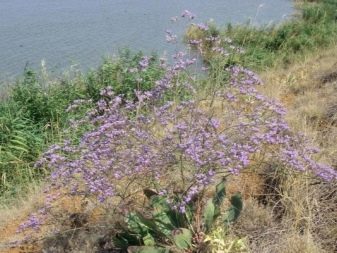
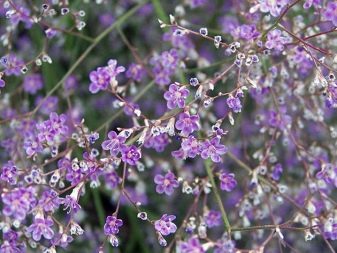
Description
Kermek, statitsa or immortelle - this culture is widely known to gardeners. A perennial shrub is a decoration in a flower bed, and is also used as dead wood when decorating bouquets. Plants that are grown as annuals are called limonium.
Externally, the plants are very similar to each other. Leaves are straight, slightly elongated, with straight stems, on the upper part of which leaves are almost completely absent. The root system is fragile. Inflorescences of various colors.
Blooms mainly in the middle of summer.

Varieties
Kermek has about 350 varieties. Many species migrated to their homesteads from the wild, practically without changing their appearance. The plant attracted gardeners for its winter hardiness and decorative appearance.
Kermek broadleaf (flat-leaved) - earned its name for its wide leathery leaves, which are collected in a basal rosette. On highly branching shoots, small inflorescences of a purple tone are formed. The maximum height of the bush is 50 cm. Flowering occurs in the middle of summer and lasts about 2 months. It should be noted that the flowers have an unpleasant odor. Prefers to grow on dry steppe soils, does not tolerate stagnation of water in the root system. The place for the bush is chosen open and the sunniest.
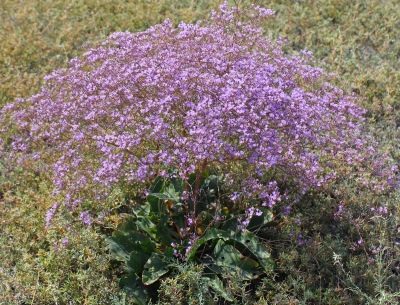
Kermek Tatar - a low bush, 30-40 cm. Outwardly it resembles a ball. The leaves are wide and leathery. The bush blooms in June with white buds. The petals are dry. When growing, it does not need special care. It will feel great on dry, rocky, acidic soils. To achieve lush flowering, it is necessary to enrich the soil with humus. It is better to plant the bush in a well-lit place, preferably on an alpine hill. There is no need to shelter for the winter. Seed germination begins in March, seedlings are transferred to open ground in August and September.
The most effective breeding method is by dividing the socket.
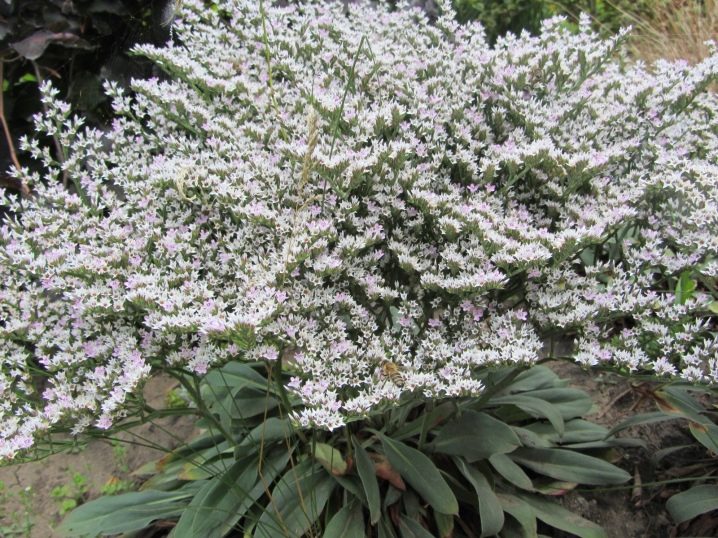
Kermek Gmelin - looks like a broadleaf variety, but it has less branchy shoots. The leaves are obovate, light or gray-green in color. Paniculate-branched inflorescences are collected in dense, short corymbose racemes, predominantly of a purple hue. The plant blooms in late summer. Peduncles look great in a bouquet arrangement both in a living and in a dried state. The culture is considered an excellent honey plant. Despite the winter hardiness, it is preferable to cover the kermek Gmelin with mulch, and also shade in the spring from bright sunlight.
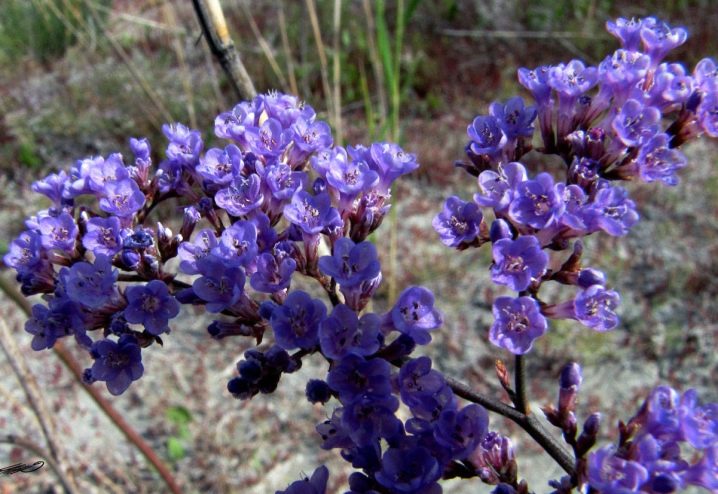
Statice of Suvorov - this variety is grown as an annual crop. Seeds begin to germinate in April and are planted permanently in late May or early June.
Inflorescences outwardly resemble spikelets of plantain, reaching a height of 20-80 cm, painted in a lilac or pink tone.
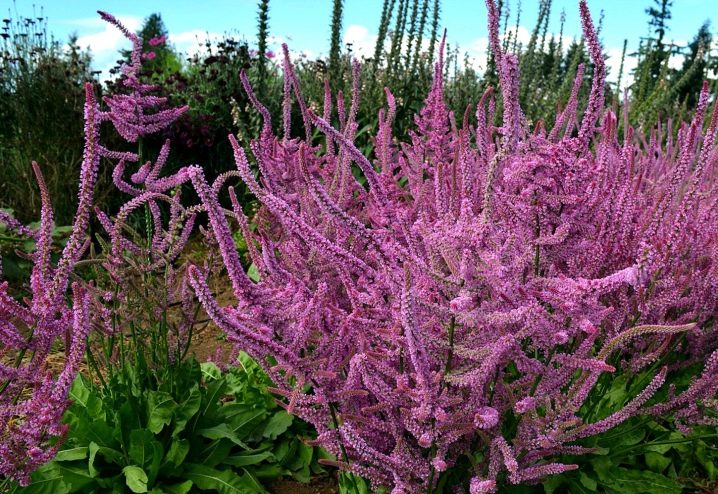
Kermek notched - the average plant height is about 80 cm. The leaves are weakly expressed and pinnate. Wide-winged ribs are formed on the sides of the stem. Inflorescences are formed into dense ears of various shades: blue, purple, pink, white, yellow. In the temperate climate of the country, the culture is grown as an annual.Requires maximum lighting, since even a small partial shade can greatly affect the quality and duration of flowering. It is noteworthy that after cutting, dried flowers and petals do not change their shape and color.
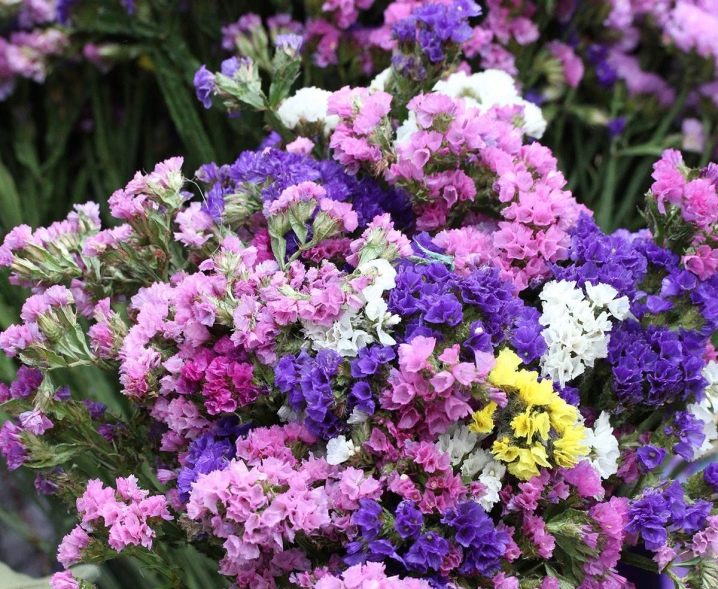
Kermek Caspian - a very beautiful perennial shrub that prefers to grow on wet salt marshes, the shores of the sea coast and salt lakes. The appearance of the variety is very close to that of Gmelin, but differs in that in the lower part of the peduncle branches are not naked, but are often covered with thin branched shoots. Inflorescences are small, amazing lilac color.
In the middle lane, this variety is not cultivated, as it is too thermophilic.
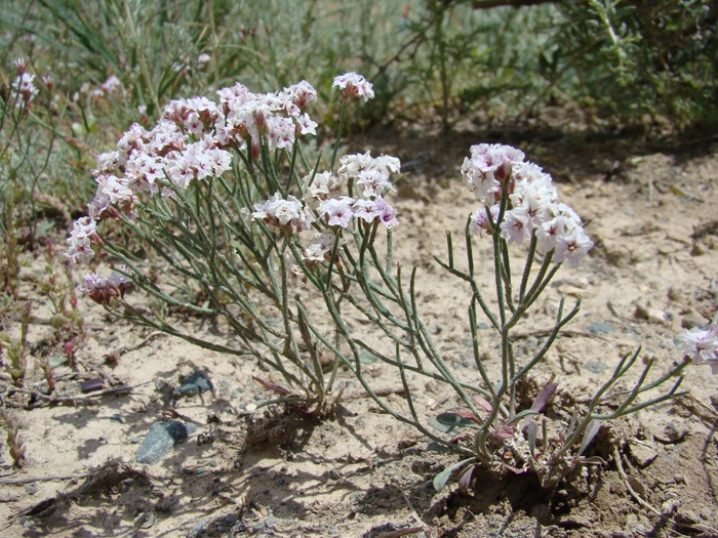
Landing
Despite the simplicity of care, it is quite difficult to propagate and plant a crop on the site. Seed germination is low, no more than 25%. The best way to obtain planting material is seedling. Seeds begin to germinate in March, it is better to initially plant the germinated seed immediately in separate containers.
Kermek does not tolerate a transplant, since it is extremely difficult to separate the mother's outlet without damaging it, due to the fact that the plant has very long roots.

Care
The plant categorically does not tolerate stagnant water in the root system. And it is also necessary to protect the bushes in early spring from sunburn. The main requirement for planting is good drainage. If you plan to grow limonium for the sake of inflorescences, the bushes must be fed with organic fertilizers once every 2 weeks, especially on heavy clay soils. Do not forget to regularly loosen and mulch the soil.
If a prolonged drought is established, the kermek is additionally irrigated.
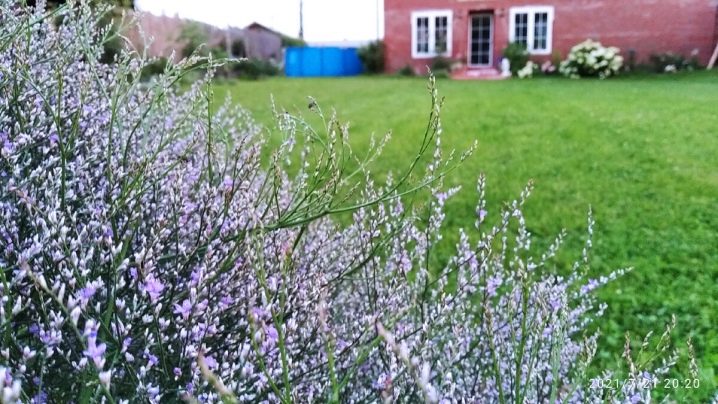













The comment was sent successfully.